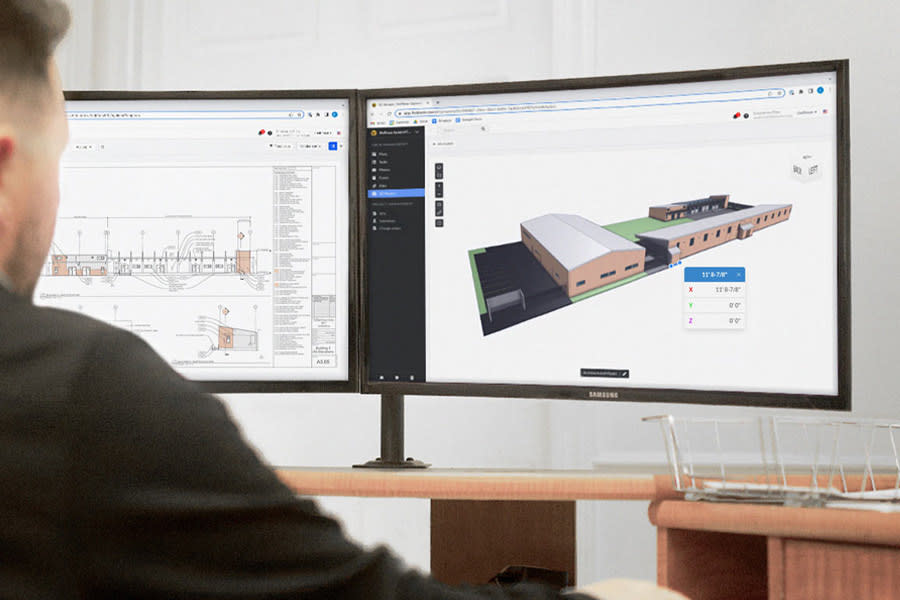A turning point for BIM-to-Field adoption
Read the article published by Construction Tech Review
From stone tablets to hand-drawn plans, to AutoCAD and now BIM—construction documents have come a long way, each step improving design, safety, and productivity. But despite its potential, BIM has yet to fully make the leap into the field. Is it because there’s no demand—or simply no good solution that makes it easy to use BIM on site?
BIM adoption is progressing around the world
BIM adoption varies significantly across countries, with some governments actively mandating its use on public projects. In the EU, UK, and Singapore, BIM is required for government-funded work. In Germany, for example, BIM has been mandatory for public infrastructure projects since 2020 and for government buildings since 2022. While BIM was traditionally used for large-scale projects, these mandates are accelerating adoption for smaller builds—prompting more contractors, architects, and engineers to seek solutions for creating and working with BIM models.
The primary use case for BIM remains clash detection during pre-construction. By creating a detailed digital twin of the building, design teams can identify and resolve conflicts before construction begins. This process significantly reduces the risk of costly errors, rework, and delays—ultimately helping to keep projects on time and on budget.
In the U.S., although there is no nationwide BIM mandate, adoption continues to grow year over year. A 2020 survey by the American Institute of Architects revealed that 58% of all architecture firms use BIM (100% of large firms, 88% of mid-sized firms, and 37% of small firms), clearly showing that BIM has become an integral part of the design process. Another strong example for BIM adoption in the U.S. is the California Department of Transportation (Caltrans) which actively promotes the use of BIM to enhance project accuracy and efficiency.
BIM in the field: Challenges slowing adoption
Despite growing use in the design phase, adoption of BIM in the field remains low—largely due to a few key challenges:
-
Contracts: On most construction projects, 2D plans are still the contractual source of truth, limiting the reliance on 3D models during execution.
-
Cost: Updating BIM models with the level of detail required for field use is often expensive and time-consuming.
-
Change management: As in many industries, resistance to change plays a role. The shift to BIM requires new processes, training, and mindset shifts.
-
Technology: Large, multi-gigabyte models can be difficult to load and navigate on mobile devices. Few solutions today handle this well enough for field teams.
The case for BIM in the field
Construction is evolving. As the industry faces ongoing labor shortages and increasing pressure to deliver faster and more accurately, technology in the field is becoming critical. BIM has the potential to play a central role in this transformation—boosting productivity, improving quality, and reducing rework.
Beyond efficiency, BIM can also make the industry more attractive to the next generation. The use of advanced tools and visual models aligns with the interests and skillsets of younger, tech-savvy workers—helping to attract fresh talent to the trades.
In the field, BIM improves visualization and supports better decision-making. It helps teams understand what the finished product should look like before it's built, reduces the need for RFIs, and streamlines communication between field and office.
Most importantly, mobile access to BIM models is becoming easier than ever. Today’s smartphones and tablets are powerful enough to handle large, complex models, and modern construction software—like Fieldwire by Hilti—makes it simple for field teams to view, navigate, and interact with 3D models with minimal training.
Looking Ahead
BIM usage in the U.S. is already high in the design phase, and improvements in mobile technology are making it increasingly practical to bring BIM to the field. The benefits are clear:
-
Connect field and design teams through tasks and communication directly in 3D models.
-
Empower crews with model metadata to make faster, better decisions.
-
Reduce RFIs and rework by visualizing complex install conditions in 3D.
-
Expand access to BIM for contractors through intuitive, field-friendly tools like Fieldwire by Hilti.
Together, these advances can help construction teams work faster and safer—and help shape a more innovative, tech-forward industry for the future.
About Construction Tech Review
Construction Tech Review is a one of a kind knowledge platform that brings to its audience insider information from the construction industry. Construction Tech Review was born out of the ambition to bring about a peer-to-peer learning approach that brings together senior decision makers from leading organizations and their counterparts in their domains under one roof so that they can share their wisdom, knowledge and technological expertise among peers.




















